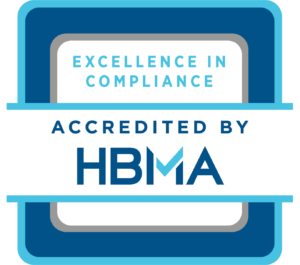An Explanation of Benefits (EOB) statement is a critical document in the healthcare revenue cycle. It provides detailed information about how a healthcare claim was processed by the insurance company.
Here’s how to read and understand an EOB, with key sections explained in the context of the revenue cycle.
Patient Information
What it is: This section includes the patient’s name, ID number, and other identifying information.
Why it matters: Verifying that the information is correct is crucial. Any errors in patient details can delay payments or result in denied claims.
Provider Information
What it is: The name of the healthcare provider or facility that rendered services.
Why it matters: Ensure the listed provider matches the healthcare provider that treated the patient. If this is incorrect, the payment may not go to the right entity.
Service Date
What it is: The date(s) the service was provided.
Why it matters: This confirms the time period during which the services were performed. Correct dates ensure that the services align with the patient’s coverage and benefits.
Service Description
What it is: A brief description or code (CPT/HCPCS) of the services provided (e.g., office visit, lab tests).
Why it matters: Check that the services match what was actually performed. Discrepancies can lead to claim denials or underpayments.
Billed Charges
What it is: The amount the healthcare provider billed for each service.
Why it matters: These are the provider’s charges before any insurance adjustments. It’s essential to confirm the provider billed the correct amounts for the services rendered.
Allowed Amount
What it is: The amount the insurance company has agreed to pay for the service, based on contracted rates with the provider.
Why it matters: This is typically less than the billed charges due to pre-negotiated rates between the provider and insurance company. Knowing this helps ensure that the provider is reimbursed according to their contract.
Not Covered/Denied Amount
What it is: Any portion of the billed charges that is not covered by the insurance plan, such as excluded services or denied claims.
Why it matters: Understanding why a claim is not covered or denied is important for resolving issues quickly. It might involve resubmitting the claim or appealing the decision.
Patient Responsibility
What it is: The amount the patient is responsible for paying, such as deductibles, co-pays, or coinsurance.
Why it matters: This shows what the patient owes after insurance processing. The provider will bill the patient for this amount.
Payments Made by Insurance
What it is: The actual amount the insurance company is paying to the provider for the services rendered.
Why it matters: This is the final payment the provider will receive from the insurer for the claim. Ensuring this matches the expected reimbursement is key for cash flow in the revenue cycle.
Adjustment Codes/Explanations
What it is: Codes or explanations that indicate why certain amounts were adjusted, denied, or not covered (e.g., contractual obligations, not medically necessary).
Why it matters: These codes help providers understand why certain amounts were not paid in full. If there are errors, the claim may need to be corrected or appealed.
Total Billed vs. Paid
What it is: The total amount billed by the provider and the total amount paid by the insurance company.
Why it matters: This helps identify any discrepancies between what was billed and what was reimbursed, which can impact revenue. Monitoring these amounts helps ensure the provider receives full payment.
Key Steps in Revenue Cycle Using the EOB
- Claim Review: Use the EOB to verify that all services rendered were billed correctly and that payments match the negotiated rates.
- Payment Posting: Record payments from the insurance company in the provider’s accounting system. Ensure the amounts match what was expected.
- Denial Management: Investigate any denials or discrepancies and determine the next steps (e.g., appeal, rebill).
- Patient Billing: Send the patient a bill for the amount they are responsible for, as indicated on the EOB.
Reading an EOB properly is essential for accurate payment posting, denial management, and ensuring that the healthcare provider gets paid appropriately for services rendered.










